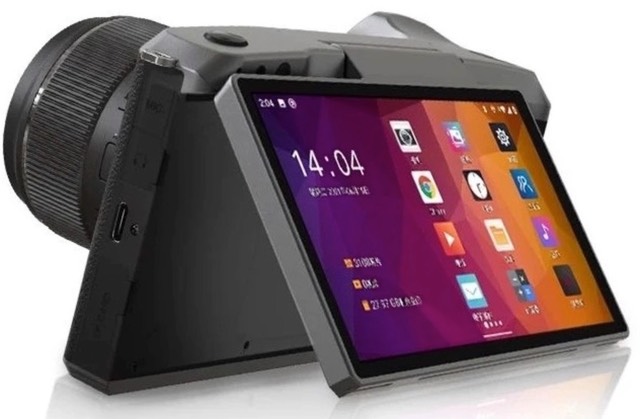Both Nikon and Samsung experimented with an Android-based camera. Both failed spectacularly. Now we have Yongnuo showing an m4/3-based Android camera in China. Will it fail, too?
Probably. The issue is the same one that makes SnapBridge and the other camera-to-mobile platforms problematic: too much manual customer labor to get the desired result.

Although the Yongnuo YN455 has cellphone capability built in and thus can send images out directly (if you're willing to pay for an extra line), the problem is that Android cameras have up to this point been very modal: you can be in the camera mode or in the phone/tablet mode. In the camera mode you take images that go to the Camera Roll, but you typically still have to change modes and then pull those images off the Camera Roll via your preferred mobile social networking program. This really doesn't go beyond the SnapBridge modality, unfortunately, though it does it on one device.
At the other side, are you going to still carry a phone if you have a phone/camera? If not, the phone in the camera body becomes somewhat cumbersome, and it's not going to slide into a shirt pocket, so you're likely to not have it as accessible.
Do I believe that a camera/phone combo can be made correctly? Absolutely. You'd tend to still have that second problem I refer to if you designed it as an ILC (accessibility), but you can certainly get rid of the modal issue if you understand the problem well enough and want to devote enough resources to get it right and keep it up to date with most recent social network APIs (ah, there's the rub).
Convergent devices have long been sought after in the high tech world. Convergent means that you take two or more dedicated devices and combine them into one integrated device. To date, the primary ones that have managed to successfully do that in the consumer space are some form of the receiver/amplifier/player/speaker, the printer/copier/fax, and the phone/computer thing we call a smartphone.
The problem with convergent devices is that they have to fully integrate all the devices to truly break down the barrier in using two or more different devices. If all you've done is move two different devices into the same box and have to control them separately, that's not enough. And the modality that Android has tended to enforce—you can get around this, but then you have the added issue of syncing to Android releases and security patches—makes it tough to totally combine that camera and phone. Even within the best smartphones you still find a small layer where you have to do something manually to share out of the Camera Roll. In iOS, that's the share icon (arrow up out of a box). In essence, the camera apps are trying to bridge the modality by giving you that shortcut icon.
